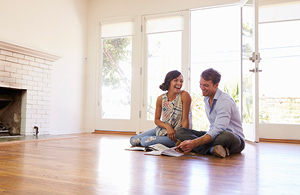
Choosing the right sized AC system for your home.
You may think that once you’ve installed the most energy-efficient AC system in your new home, you’re all set with the best equipment you need to keep your home cool and save the most on AC costs. But that’s not necessarily true. It is also vital that you get the right sized AC system to cool your home effectively and efficiently.
An AC system that’s too small will not be able to cool your home properly and continuous running will make for very high energy bills. An AC system that’s too big may cool your home too quickly, causing it to run for very short cycles and not having enough time to remove humidity from the air, which can lead to mold and mildew problems. This kind of on-off cycling may also wear out your system faster and cause uncomfortable hot and cold swings.
How to determine a correctly sized AC system.
First, you need to understand how central AC systems are measured. In AC terms, size refers to cooling power, not physical size and you must look at the tonnage or BTUs (British Thermal Units), which are a measure of heat.
Understanding BTUs.
While tonnage is a measure of how much heat an air conditioner can remove in one hour (tonnage isn’t the weight of the AC unit), 1 ton = 12,000 BTUs / hour. So, a two-ton air conditioner removes 24,000 BTUs per hour. When an central AC system is listed by BTUs rather than by tonnage, it’s usually referring to BTUs per hour, so the two measures are directly comparable if you multiply or divide by 12. A window AC unit might be around 5,000 to 10,000 BTUs, while residential central AC systems average between 20,000 to 50,000 BTUs. This chart can help you see how many BTUs are usually needed to cool certain rooms:
Typical BTUs Needed
| Area (Sq.ft.) | Room Type | Recommended BTUs |
|---|---|---|
| 100-300 | Bedroom or home office | 5,000-6,000 |
| 100-300 | Master bedroom or playroom | 7,000-8500 |
| 350-650 | Living room, family room, or open plan | 9,800-12,500 |
Source: https://www.consumerreports.org/window-air-conditioners/how-to-size-a-window-air-conditioner/
It’s not just about the square footage of your home.
While square footage provides a ballpark starting point for the size of your AC system, these other factors are also important:
- The climate where you live, hot areas will have higher cooling demands and humidity will impact the size and type of AC system required to cool your home.
- The amount of natural shade your home gets, the type of roofing and how insulated your home is.
- How your home is situated, for example a single-family home may have higher cooling needs than a townhouse of the same size with one or more walls connected to neighbors. Similarly, a lower floor condo will need less cooling than a top floor condo.
HVAC professionals use all of these factors to figure out which is the best AC system to keep you cool at home and save on energy costs but they should make a final determination by using Manual J along with their own experience servicing AC systems in your area.
If you have any questions about the AC system that best fits your home and for the energy-saving systems you need to keep you cool and comfortable, our team is always here to help. Contact us today!

